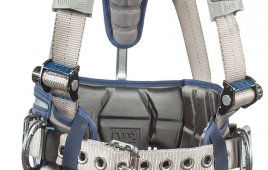The importance of safeguarding against falls in elevated work environments cannot be overstated. In this article, we delve into the intricacies of fall protection and explore the measures necessary to mitigate risks effectively.
Anatomy of Fall Protection Systems
Fall protection systems encompass a range of components designed to prevent or arrest falls from heights. These systems typically consist of anchor points, body harnesses, lanyards, and connectors. Anchor points serve as secure attachment locations for workers’ personal protective equipment (PPE), while body harnesses distribute forces evenly across the body during a fall event. Lanyards connect the harness to an anchor point, allowing limited movement while preventing free-falls. Connectors such as carabiners ensure reliable connections between various elements within the system.
Understanding Fall Clearance Distance
Fall clearance distance plays a pivotal role in determining whether a fall protection system can effectively prevent injury or fatality. It refers to the vertical distance required below an employee’s feet for their PPE and any potential obstructions (such as lower-level structures) before they come into contact with them during a fall incident. Calculating accurate fall clearance distances involves considering factors like lanyard length, deceleration distance, and worker height – ensuring that sufficient space is available for safe deceleration without striking objects below.
Selecting Appropriate Fall Arrest Equipment
Choosing suitable fall arrest equipment depends on several crucial factors specific to each worksite scenario. Employers must assess potential hazards thoroughly and select appropriate equipment accordingly. Factors influencing equipment selection include anticipated free-fall distances, anchorage strength requirements based on load calculations, compatibility between different components within the system, environmental conditions affecting material durability (e.g., exposure to corrosive substances), and compliance with relevant safety standards.
Conclusion
In conclusion, prioritizing fall protection measures is paramount to ensuring the safety of workers in elevated work environments. By understanding the anatomy of fall protection systems, calculating accurate fall clearance distances, and selecting appropriate equipment tailored to specific worksite hazards, employers can significantly reduce the risk of falls and their associated consequences. Implementing comprehensive fall protection strategies not only safeguards employees but also promotes a culture of safety within organizations.



